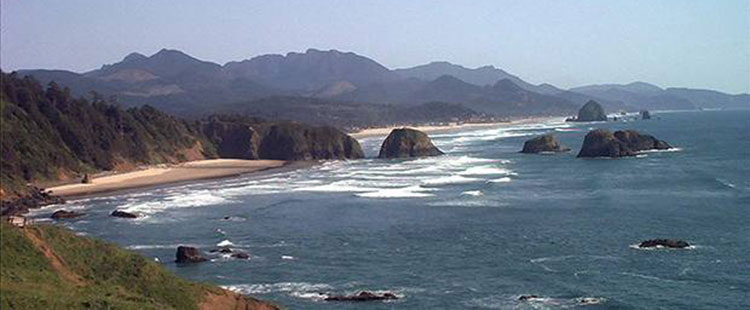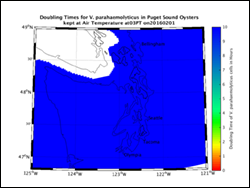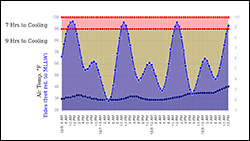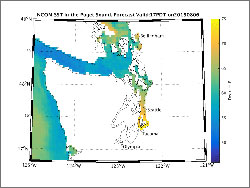Shellfish Guidance - Pacific Northwest
Shellfish Guidance - Pacific Northwest


Doubling Time of Vibrio parahaemolyticus (Vp) in Puget Sound Oysters
Vibrio parahaemolyticus has one of the fastest growth rates of all estuarine bacteria, and the population can replace itself, or double every hour at 90°F. This product uses local NWS gridded forecasts of air temperature from the National Digital Forecast Database to force a statistical growth rate equation (USFDA 2005) for Vp. The spatially explicit graphical display allows users to determine where and when the highest doubling times will occur every hour, out to 72 hrs in advance to plan harvest and refrigeration strategies.
View Model

Puget Sound Temperature Warnings
A list of Shellfish Growing Areas. Click on the Growing Area Name below to see the Air Temperature forecast and corresponding Time to Cooling.
View Model

Sea Surface Temperature (SST) in Puget Sound
Temperature is a major driver of Vibrio growth. In general, once water temperatures exceed 15° C, or 59°F growth will occur, with faster replication at higher temperatures. Because of the strong dependence on temperature for growth, SST is used in some cases to trigger harvest restrictions. This product provides 96 hr modeled guidance for SST for parts of the Puget Sound, Strait of Juan DeFuca, and coastal waters based on the NAVY HYCOM model.
View Model

Tides
The Puget Sound experiences two uneaqual high and low tides each day. The range is impressive, with change in water levels often exceeding 8 feet. Much of the shellfish harvest is conducted when the tide recedes, allowing access to intertidal beds. NOAA maintains several real-time monitoring stations for tidal height, water temperature, winds, currents and other parameters as well as tidal predictions. The link provided will access the Seattle buoy and allow the user to navigate to the other locations throughout the Sound.
View Model
Other Useful Links
As a work in progress, current Vibrio models displayed here are considered experimental products, and thus NOAA will not be held liable from issues arising from their interpretation and use.